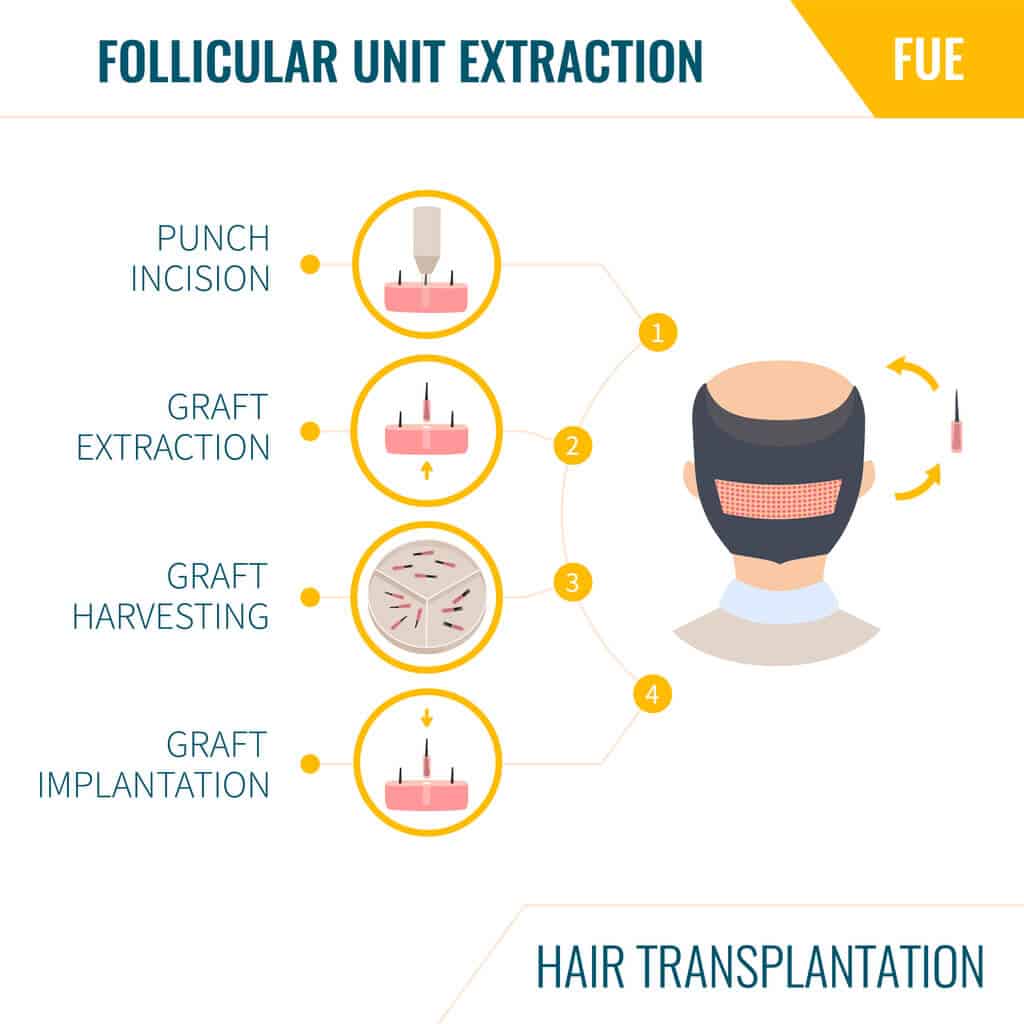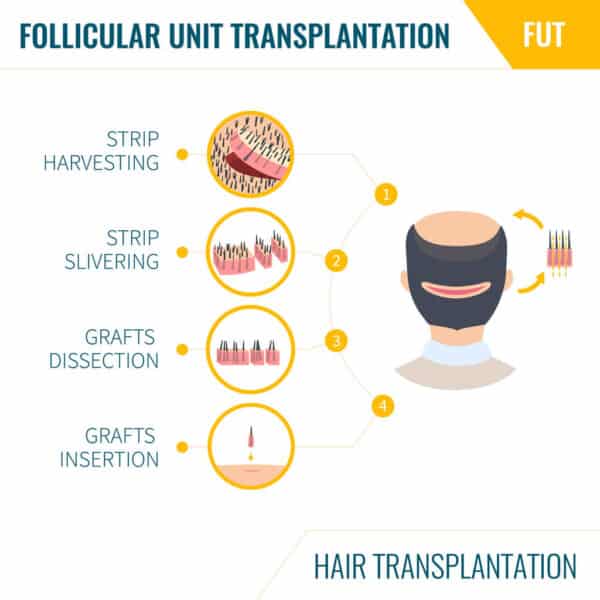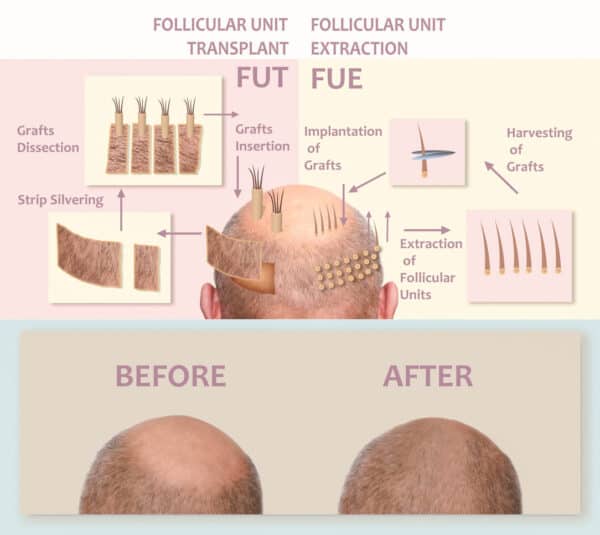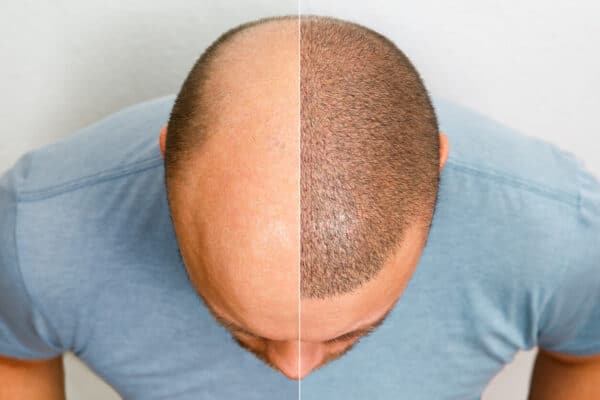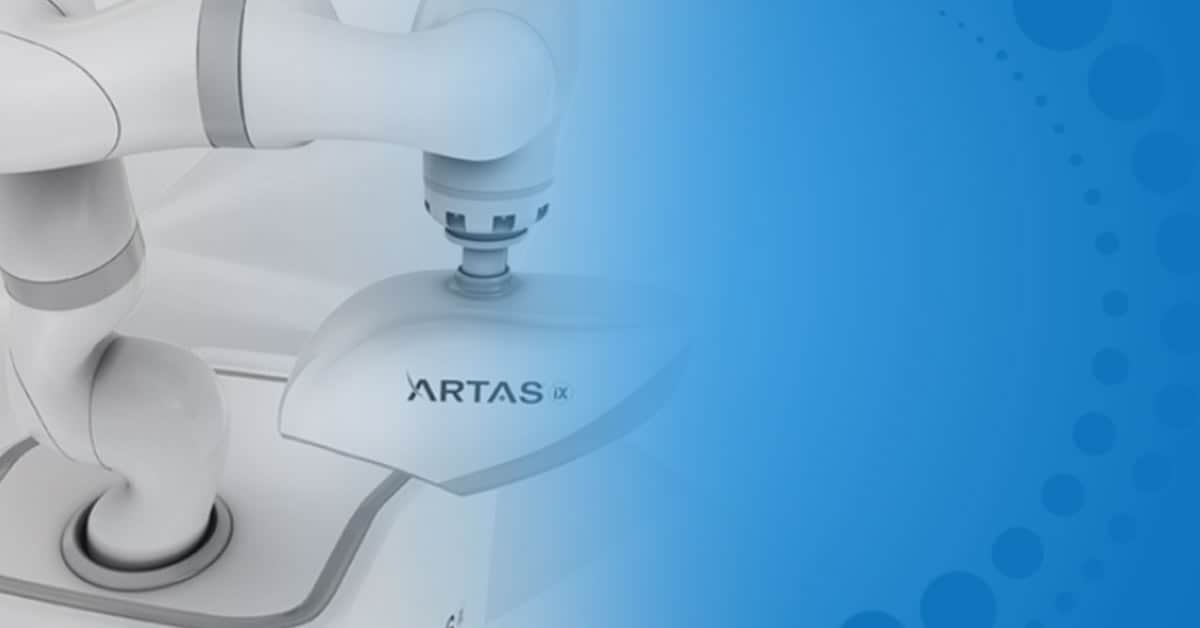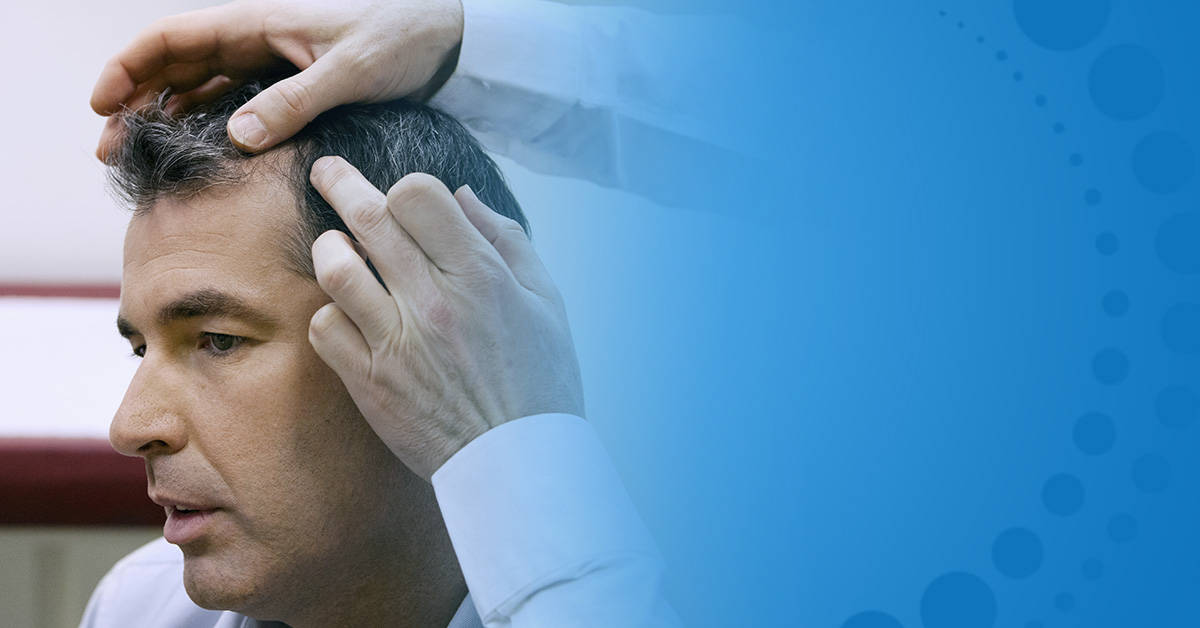FUE Hair Transplant vs. FUT Hair Transplant
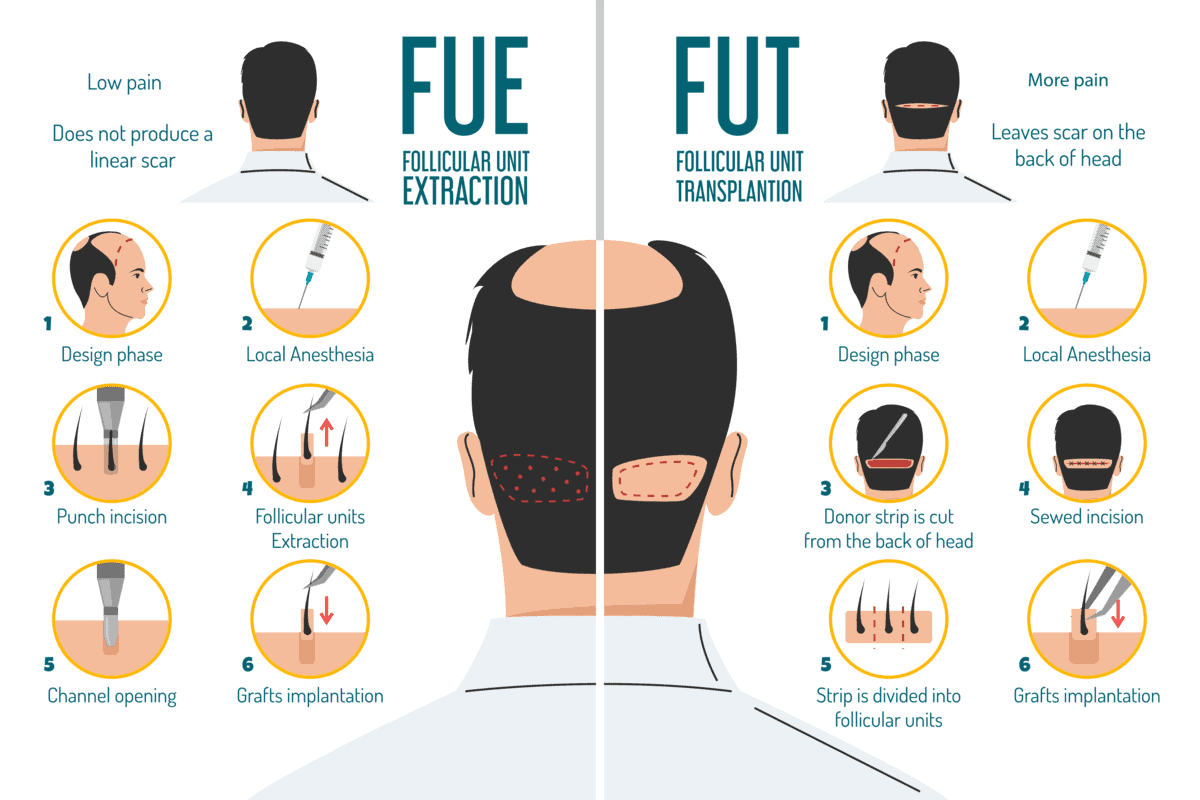
When considering the proper approach to managing hair loss, there are two primary transplant techniques to consider: Follicular Unit Extraction and Follicular Unit Transplantation. We’re sure you have more than a few questions about their differences and which procedure may suit you best.
Follicular Unit Extraction (FUE)
FUE (follicular unit extraction) is the process of extracting individual hair follicles from the donor area and transplanting them to an area that is thinning or an area of permanent hair loss.
Each follicle is surgically extracted, microscopically screened, and carefully prepped before implanting into areas experiencing permanent hair loss. This process is minimally invasive and has no long-term scarring or pain.
Follicular Unit Transplant (FUT)
FUT (follicular unit transplant) is when the surgeon removes a linear strip of your scalp from your donor area and dissects individual follicular units from this strip. The FUT procedure is also commonly known as “the strip method” for this reason.
The scalp is then sutured back together, and the individual follicular units from the excised strip are dissected, assessed microscopically, and then prepped to be implanted into areas of concern.
Is FUE or FUT More Painful?
FUT is certainly the more painful of the two options.
In “Comparison of postoperative pain according to the harvesting method used in hair restorative surgery,” the National Center for Biotechnology Information discusses the difference between the postoperative pain experienced from FUE and FUT procedures, stating:
“…the FUT method is more painful than the FUE method; it also involves a linear scar but does not require donor area shaving. In contrast, the FUE method is less painful and does not leave a linear donor scar, but it necessitates shaving the donor area.”
Additionally, since FUE is a minimally invasive procedure, recovery times are shorter and less painful than FUT. Recovery from Follicular Unit Transplant often requires pain medication, but FUE rarely does.
Do FUE Scars Fade?
The scars from Follicular Unit Extraction procedures usually present themselves as small dots on the back of the head, where they are typically hidden by the re-grown hair. These scars fade over time, and (in some cases) they may not be visible even if the patient’s head is shaved.
Is FUE as Effective as FUT?
FUE procedures often offer equivalent results compared to FUT surgery (or strip surgery) with less pain, a shorter recovery period, and without leaving a scar.
What Percentage of FUE Grafts Survive?
The industry standard is a graft survival rate of roughly 60-70%, which a reputable hair clinic offering FUE will usually have. However, highly-experienced hair surgeons’ survival rates can approach 90% or higher. (source).
The success rate of the FUE procedure is comparable to that of the FUT method. However, FUE has a distinct advantage over FUT in producing minimal scarring, particularly when using ARTAS robotic FUE technology.
The employment of AI technology, 3D mapping, and micro-precision in ARTAS systems can result in remarkably high success rates for these transplant procedures. FUE hair transplants using ARTAS have success rates in the upper 90th percentile, with graft survival rates of 90%.
FUT is falling out in most modern hair clinics because the procedure causes scarring on the back of the head.
Does FUE Look Natural?
Yes, the results of an FUE procedure appear very natural-looking. FUE hair transplant technology has advanced incredibly over the years.
The American Academy of Dermatology Association states that “most surgeons now transplant the healthy hairs a few at a time. This eliminates the unnatural doll-like hair that patients saw in the 70s and 80s.”
When performed on appropriate candidates, FUE results can look perfectly natural. Once the hair follicles are transplanted, they should be permanent.
FUE vs. FUT: What You Need to Know
Both FUE and FUT procedures are effective at regrowing hair that you have lost. However, FUE offers a more innovative and modern approach with robotic options.
Since FUT requires the excision of a section of the head and suturing, patients report a more painful procedure experience. FUT patients complain of lingering pain and scalp tightness months after the procedure. FUE eliminates these factors, as many patients have minimal to no pain the next day.
FUT leaves a linear scar at the back of the head since the surgeon must suture the scalp after making a large incision to remove a strip-like portion. Whereas with FUE, the hair follicles are extracted individually from the back and sides of the head, leaving no visible scarring. The scar from a FUT procedure is permanent and will be visible, especially for individuals who prefer short or shaven hair.
Are you experiencing hair loss and considering FUT or FUE?
If you’ve been considering hair restoration to combat hair thinning or loss, Austin Hair Restoration Clinic offers a free consultation to determine cause and whether you’re a good candidate. The ARTAS® System produces exceptional results and will get you back to your normal day-to-day life in no time.
Dr. Sanjeev Dubey is an experienced hair restoration and emergency medicine physician in Austin, Texas. He holds a medical degree from the University of Texas Medical Branch (UTMB) and has been practicing medicine for over two decades. His affiliations include Seton Medical Center Austin, Seton Northwest, and various local hospitals.

